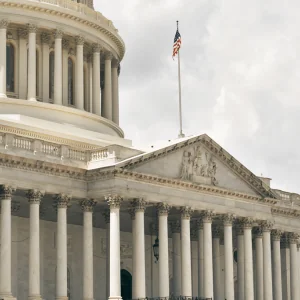トランプ政権の追加関税措置は、日系企業に強い衝撃を与えている。日米間取引価格の見直しを余儀なくされ、移転価格ポリシーにおいても抜本的な再構築が求められている。いま移転価格税制の下では、関連企業間での国際取引価格が独立企業間(Arm’s Length)の適正水準にあるかどうか、すなわち、恣意的な価格操作が介在していないかが、各国税務当局によって鋭く監視されている。日系企業は、万全の対策を講じなければいけない。とりわけ米国税務当局(IRS)は強大な権限を有している。海外関連企業と取引する米国企業に対し、取引価格が適正水準から逸脱していると判断した瞬間、課税所得を更正する権限を発動することができる(IRC482)。その結果、課税所得は再計算され、追徴課税に加え、さらに重いペナルティ(IRC6662 Penalty)が課されるのだ。本稿では、こうした移転価格リスクの回避方法について概説する。
A. 移転価格ペナルティの回避方法
IRC482に基づき、取引価格の更正や課税所得の再計算が行われた場合、追徴課税およびその部分に対するIRC6662ペナルティが発生する。これを回避する手段として、移転価格に関する税務調査が入った際には、30日以内に移転価格文書(ドキュメンテーション)を提示することが求められる。代表的な移転価格スタディとして、以下の「基本三法」がある。
a) CUP法 (Comparable Uncontrolled Price Method)
対象となる関連会社間の販売価格を、同等の条件・環境下で行われている独立企業間の販売価格と比較する方法。
b) RP法 (Resale Price Method)
国外関連取引に係る商品の買手が、その商品(類似商品を含む)を第三者に販売した価格から通常の利潤を控除した金額を、独立企業間価格とみなす方法。
c) CP法 (Cost Plus Method)
国外関連取引に係る商品の売手が、その商品(類似商品を含む)を取得・製造するための原価に、通常の利潤を加算した金額を独立企業間価格とする方法。
しかし、上記の基本三法による移転価格スタディを実務的に作成することは難易度とコストが高いため、実際には次の方法が一般的である。
d) CPM法 (Comparable Profit Method)
比較対象会社の取引価格や利潤そのものではなく、利益率(一般的には営業利益率)を比較する方法。
いずれの手法を用いたとしても、移転価格スタディの存在自体が追徴課税を完全に回避できる保証にはならない。すなわち、スタディを備えていればIRC6662ペナルティ(最大40%)からは免除されるが、IRSが納税者のスタディに同意せず、課税所得の更正や追徴課税が行われる可能性は依然として残る。
B. 事前確認制度(APA: Advance Pricing Arrangement)
移転価格調査そのものを回避する手段として、APAが挙げられる。これは事後的な移転価格スタディ提示、ドキュメンテーション対応とは異なり、企業が事前に税務当局へ申請・協議を行い、取引価格の妥当性について合意を得る制度である。APAには次の2種類がある。
1) バイラテラルAPA(BAPA)
概要:複数国の関連者との取引について、関係国双方の税務当局が協議を重ね、国際的な二重課税を排除する制度。
期間:新規のBAPAは、2023年には合意までに平均約50か月を要した。
2) ユニラテラルAPA(UAPA)
概要:一国のみの税務当局と合意する制度。相互協議が不要なため、比較的早期に合意が得られ、時間とコストを軽減できる傾向にある。
期間:新規のUAPAは、2023年には合意までに平均約45.2か月を要した。
APAのメリットは、対象期間における移転価格調査および課税リスクを完全に排除できる点にある。一方で、移転価格スタディ、ドキュメンテーションに比べ、規模や期間、コストの面では負担が遥かに大きいことが挙げられる。
C. まとめ
日米間で取引を行う日系企業にとって、移転価格対応は避けて通れない課題である。それは商品の貿易に限らず、ライセンスなどの無形資産、マネジメントやマーケティングなどの役務提供サービス、企業間ローンや金融保証といった金融取引まで、幅広く対象となる。移転価格対応はオプションではなく、すべての米国進出日系企業が準備すべき必須事項である。IRC482による課税所得の更正、追徴課税、IRC6662ペナルティ、それらを回避するためのドキュメンテーション、そして最終的な切り札となる事前確認制度(APA)。これらの制度を知識として理解するだけでなく、企業の移転価格ポリシーとして体系的に構築する必要がある。さらに、日米双方で税務当局の視点や考え方が異なるため、日本の親会社とも十分にすり合わせを行うことが重要である。日米間の経済取引がますます複雑化・高度化する現代において、企業として移転価格対応を一層強化していくべきであろう。
<本ニュースレターは、米国における一般的な動向や情報をご案内する目的で配信している。具体的なご質問やアドバイス等は専門家に直接ご相談下さい。>
Japanese US Subsidiaries Face Rising Transfer Pricing Pressures Under Trump Tariffs
The Trump administration’s additional tariff measures have reshaped the landscape of trade and business between Japan and the US. Japanese subsidiaries in the US are now forced to revisit transaction prices and fundamentally rethink their transfer pricing policies. What was once a technical compliance issue has now become a strategic necessity. Under current tax rules, the IRS authorities closely monitor whether prices between affiliated companies reflect the “arm’s length” principle, meaning they are consistent with what would have been charged between unrelated parties. Any deviation risks triggering intervention. For Japanese subsidiaries, the consequences can be especially severe. The IRS, wielding significant authority under IRC 482, can unilaterally adjust taxable income the moment it determines that prices have strayed from acceptable levels. Such adjustments are not limited to additional tax liabilities. They also carry the weight of IRC 6662 penalties, which can reach as high as 40% (of additional tax liabilities). In this article, we would like to highlight practical steps to minimize these risks.
A. Avoiding Transfer Pricing Penalties-Documentation
Currently, Japanese subsidiaries in the US are under pressure to strengthen their transfer pricing positions. One of the most important safeguards is the preparation of transfer pricing documentation, which must be provided within 30 days if requested during an IRS audit. Companies have several methods available to demonstrate that their pricing is reasonable. There are three typical transfer pricing study methods:
a) CUP Method (Comparable Uncontrolled Price Method)
This method compares the sales price between related parties with the sales price between independent companies operating under similar conditions and circumstances.
b) RP Method (Resale Price Method)
This method determines the arm’s length price as the price at which a buyer of goods in a foreign-related transaction sells those goods (including similar goods) to a third party, minus a normal profit margin.
c) CP Method (Cost Plus Method)
This method determines the arm’s length price as the cost to acquire and manufacture those goods (including similar goods) by a seller of goods in a foreign-related transaction, plus a normal profit margin.
However, due to the practical difficulty and cost involved in preparing a transfer pricing study using the three basic methods, the following method is generally used.
d) CPM (Comparable Profit Method)
This method compares profit margins (typically operating profit margins) rather than the transaction prices or profits of comparable companies.
B. Advance Pricing Arrangement (APA)
Still, documentation alone provides only partial protection. While it may shield a taxpayer from steep penalties, it does not guarantee immunity from tax adjustments if the IRS disagrees with the analysis. For companies seeking greater certainty, a more proactive tool is available: the Advance Pricing Agreement (APA). Unlike documentation prepared after the fact, an APA involves negotiating pricing methods directly with tax authorities in advance.
1) Bilateral APA (BAPA)
Overview: A system for eliminating international double taxation through repeated consultations between tax authorities in multiple countries regarding transactions with related parties.
Duration: In 2023, it took an average of approximately 50 months to reach an agreement on a new BAPA.
2) Unilateral APA (UAPA)
Overview: A system in which an agreement is reached with the tax authority of only one country. Because a mutual consultation process is not required, agreement tends to be reached relatively quickly, reducing time and costs.
Duration: In 2023, it took an average of approximately 45.2 months to reach an agreement on a new UAPA.
The advantage of an APA is that it completely eliminates transfer pricing audits and tax risk during the applicable period. However, compared to transfer pricing studies and documentation, it is significantly more burdensome in terms of scale, duration, and cost.
C. Summary
For Japanese companies engaged in U.S. trade and business, the message is clear: transfer pricing compliance is no longer optional. It extends beyond goods to intangibles such as intellectual property licenses, to services like management and marketing, and even to financial arrangements such as intercompany loans and guarantees. As cross-border transactions become increasingly complex, the risks of adjustments, back taxes, and penalties rise in tandem. The challenge now is not just technical compliance, but building robust, forward-looking frameworks that align with both Japanese and U.S. regulatory expectations. Coordination between Japan headquarters and subsidiaries in the U.S. is vital, as differences in approach between the two countries can lead to mismatches. In an era of heightened scrutiny and geopolitical tension, Japanese subsidiaries will need to treat transfer pricing as a strategic priority, not just a tax requirement.
<This newsletter is distributed with the aim of introducing general trends and information in the United States. For specific questions or advice, please consult an expert directly.>









